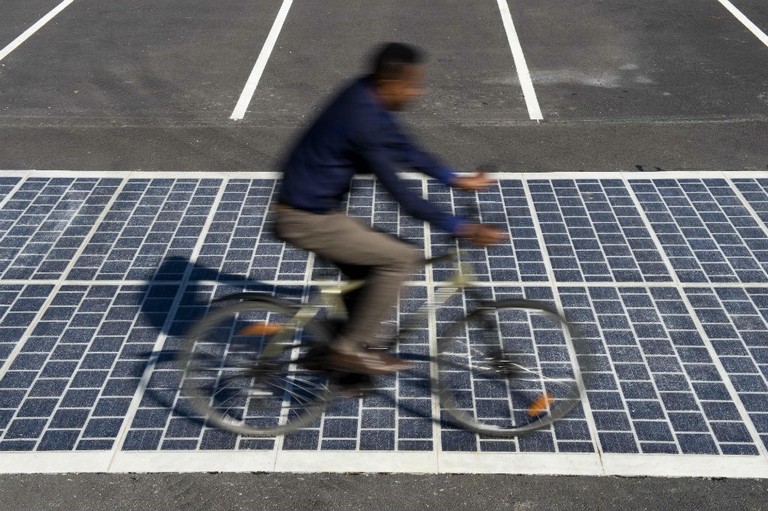
A group of experts in Tokyo suggested pouring radioactive water from Fukushima into the open sea. A marine biochemist explains the consequences of this absurd decision.
A thousand kilometres of roads will be paved with solar panels that will produce energy for millions of French people. But costs could be prohibitive.
The declaration came a few days ago and it was Ségolène Royal herself, the Ministry of Ecology, Sustainable Development and Energy, to state it: the government plans to pave 1000 kilometres of roads with photovoltaic panels in the next five years to provide millions of French people with energy.
According to the official website of Colas, the firm that will produce the panels, 1 km of solar road will be able to guarantee public lightening in a town of 5,000 residents, while once completed, the project will meet the energy demand of 8% of all France inhabitants.
The company aims to apply thin panels of polycrystalline silicon – approximately 7 millimeters thick – to the existing road surface. The solar roadway, or rather the Wattway, will resist to heavy vehicles and maintain traction, even in case of rain. The company that developed this panel system in about five years and tested it in two French towns, presented it last October. The project reminisces the first solar road built in the Netherlands last year, Solaroad, which generated 3,000 kWh of energy in just three months.
Not everyone approves projects like this. According to Craig Morris, author of the book “German Energy Transition”, this is a crackpot idea,
Indeed, considering the example of the Dutch prototype, for 70 metres of cycling lane the government spent more than 3 million euros (almost 43 thousand euros per square metre, compared to 30 euros for a normal bike lane, according to Fiab) and produced power exclusively for 3 houses. A very expensive cost, not to mention maintenance costs, for a project whose inventor said it was “useless”.
According to Minister Royal, the funds required to implement French infrastructures (including solar roads), could be provided thanks to an increase in excise taxes on fuels, which will give the State’s coffers revenues for about 300 million euros, that are enough to support the project.
Siamo anche su WhatsApp. Segui il canale ufficiale LifeGate per restare aggiornata, aggiornato sulle ultime notizie e sulle nostre attività.
![]()
Quest'opera è distribuita con Licenza Creative Commons Attribuzione - Non commerciale - Non opere derivate 4.0 Internazionale.
A group of experts in Tokyo suggested pouring radioactive water from Fukushima into the open sea. A marine biochemist explains the consequences of this absurd decision.
L’iniziativa è stata lanciata alla Cop 21 dal governo dell’India. L’obiettivo è permettere lo sviluppo del solare nelle nazioni situate tra i due tropici.
Paris is the capital that is leading the way in climate action in 2015. In anticipation of the UN climate change conference, the Eiffel Tower, one of France’s iconic monuments, has been restructured after 126 years, becoming more sustainable thanks to the installation of 2 vertical axis wind turbines that produce renewable energy. The tower was built for
A federal court in Washington, D.C. has struck down the Dakota Access Pipeline, following years of campaigning by the Standing Rock Sioux tribe.
The Scottish island of Eigg is self-sufficient for its energy needs, relying almost entirely on renewable sources, especially thanks to a coordinated community effort.
President Magufuli in unmovable in going ahead with the Stiegler’s Gorge dam despite conservationists’ warnings of the damage it will cause the Selous Game Reserve’s ecosystem and wildlife.
A large dam along the Luangwa River in Zambia would have posed a serious risk to local people and wildlife, leading hundreds of thousands to oppose it. A call to which the government responded by halting plans to build it.
The first one megawatt solar power plant in the Chernobyl exclusion zone has become operational. This is the first step in a renewable energy development project promoted by the Ukrainian government in the area.
A tanker exploded at a gas and petrol station in Nigeria’s Nasarawa state on the 10th of September, killing 35 people and leaving some burned beyond recognition; 3 citizens had several spine and brain injuries, 2 of them are still on Intesive Care Units. Fela Habila , a local singer, is now stable and out of danger but








